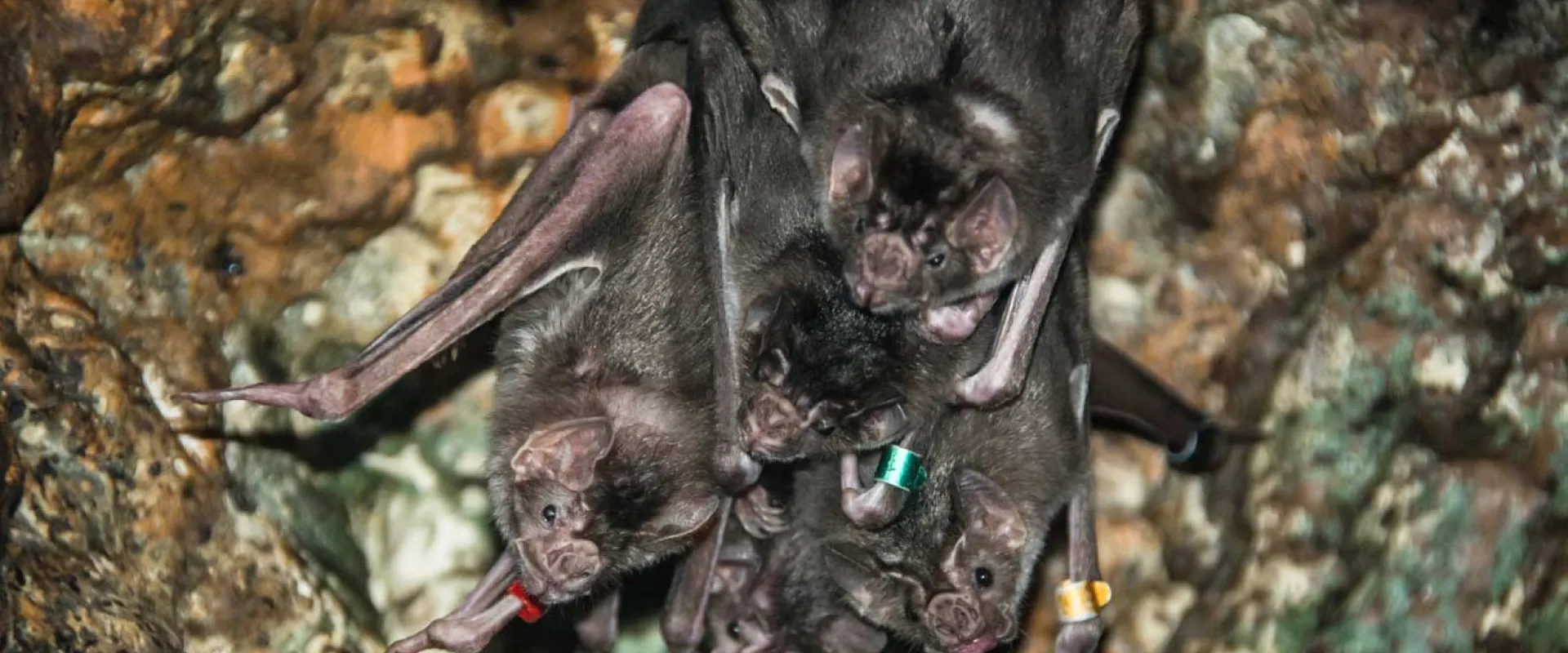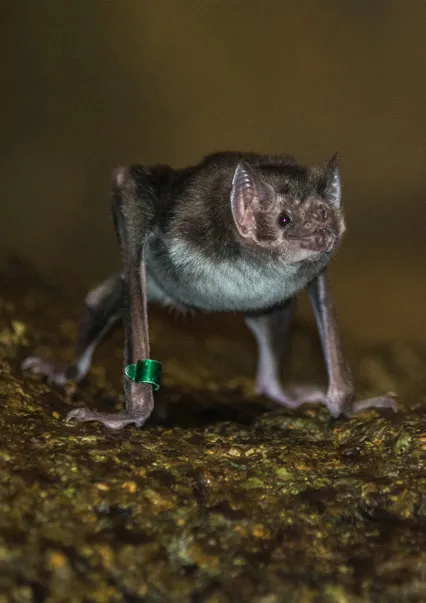About:
Did you know vampire bats have special sensors on their nose to help them identify where warm blood is flowing just beneath the skin's surface? Learn more about vampire bats.
Care & Wellness:
Vampire bats live in large colonies in the wild, and our Zoo colony is nearly 30 animals.
To replicate their wild diet, we mix an anticoagulant in with cow blood from a local processing plant for them to eat. Human blood is not on the menu.
Behavior:
- Tend to live in colonies of 100 or so animals, but may reach 1,000 individuals.
- They often assist others within the colony, for example providing blood to mothers with infants that cannot hunt.
- Unlike nearly all other bats, vampire bats can walk, run, hop, and can launch themselves vertically into flight.
Endangered Status
- Least Concern (LC)

